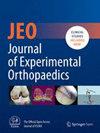Variations in bone mineral density after joint replacement: A systematic review examining different anatomical regions, fixation techniques and implant design
Abstract
Purpose
This study aims to evaluate postoperative periprosthetic bone mineral density (BMD) at various time points following joint replacement with different implant designs and fixation techniques.
Methods
Database search was conducted on MEDLINE, Scopus, Cochrane Central Register of Controlled Trials, Web of Science, and CINAHL for studies analyzing bone remodelling after joint replacement (March 2002–January 2024). Inclusion criteria: English-language articles; total joint replacement; at least two BMD evaluations; observational studies, cross-sectional, prospective, retrospective, randomised controlled trials, and clinical trials. Exclusion criteria: no BMD measurement within one month after surgery; BMD data only expressed as percentage changes or graphs without numerical values; no Gruen zone evaluation for hip replacement; no periprosthetic bone evaluation for knee replacement; pharmacological treatment or comorbidities affecting BMD; revision joint replacements; irrelevant articles; no full text or no original data.
Results
Sixty-eight articles matched the selection criteria. Fifty-five focused on the hip joint, 12 on the knee, and one on the shoulder. After total hip arthroplasty, the greatest bone resorption occurred in the proximal femur, peaking at 6 months. Cemented implants and tapered stems showed greater bone resorption than cementless implants and anatomical stems. BMD around the acetabular component decreased during the first 6 months but increased in regions subjected to higher loads. In total knee arthroplasty, bone loss occurred in the anterior distal femur and medial tibial plateau, with cemented and posterior-stabilised implants showing greater bone loss than cementless and cruciate-retaining designs.
Conclusions
The periprosthetic BMD decreases progressively after joint replacement. The fixation technique and implant design influence the extent and pattern of this decline. These factors must be considered during the surgical planning, as they can have long-term implications for bone health and implant longevity. Further research is needed to optimise implant design and surgical techniques to mitigate BMD loss and improve patient outcomes.
Level of Evidence
Level IV.


 求助内容:
求助内容: 应助结果提醒方式:
应助结果提醒方式:


